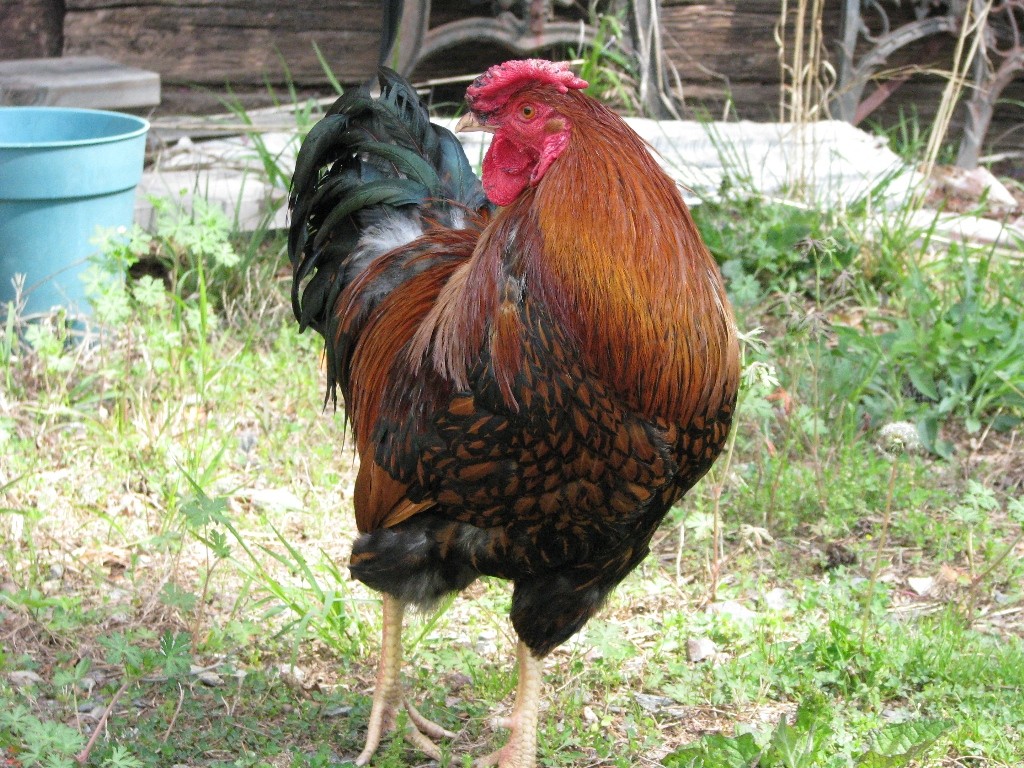Killing the Witch’s Rooster? February 3, 2015
Author: Beach Combing | in : Modern , trackbackThe most important thing about nineteenth-century witchcraft reports in British, Irish and American newspapers is that they reveal a series of beliefs that were actually practiced, but that were often too intimate and ‘stupid’ to share with a folklorist. The result is that these neglected newspaper reports are the closest that we come to the canon of witch magic and counter witch magic from the 1800s: witness, for example, last month’s walking toad. The following shocking piece dates to 16 Dec 1851 and relates to Heathfield in darkest Sussex.
As a drawback to this state of compact happiness enjoyed by this parish, the devil envious of our improvement, has recently been playing off his wily tricks in ‘the far west’ of our parish, by the sending of his fiendish emissaries to ‘bewitch’ the pigs, poultry and his devilship knows what, of one of our inhabitant recently migrated to this place from East Sussex and a who a few years ago held a respectable and somewhat affluent position. Of late, his piggery has not flourished, his pullets have refused to lay eggs, and other disasters among his feathered tribe, &c, &c, have evinced proofs of his being ‘under the hand of an evil spirit’, a witch in the neighbourhood.
So Sussex yeoman is convinced he is bewitched. How does our good farmer deal with this unhappy state of affairs? The witch didn’t suffer in any obvious way, but the local rooster…
These fiendish pranks were no longer to be borne with impunity, and in order ‘to do for,’ or at least to allay the witch, Mr XXX watching his opportunity, when his domestics were retired to bed, cautiously stopped all the sink-holes and crevices (using all the other scientific and artful dodges resorted to on such occasions), and heating his oven to its proper heat, took the roost-cock from his perch, and dashed him into the flames, putting up the oven door (close at hand) to prevent escape.
A number of questions here. Why the rooster? And what is the stopping up of sink-holes and crevices? Drbeachcombing AT yahoo DOT com Reading the next passage it becomes evident that the cockerel was possessed, was the stopping of sink holes etc to stop the demon escaping?
Thus perished the poor innocent chaunticleer, in the flames of which our neighbourhood (with a few rare exceptions of warlock and witch credulity) think Mr XXXX ought to have been the victim rather than the poor fowl. It is said Mr XXX recites these particulars without the least signs of shame at his own credulity, and further states that he was compelled to use his utmost efforts with his prong in shoring up the oven door, and was then almost over-matched by the demoniac spirit!!! Where is the schoolmaster?
28 Feb 2015: KMH writes in, ‘Breaking a so-called “witchcraft” curse with a sacrifice could be traditional depending upon the type of witchcraft involved. Identifying the witch might be next to impossible if he or she wanted to live in absolute secrecy, but the article doesn’t say a human being must have been involved, only that the devil had “bewitched” the livestock, presumably through a neighborhood witch. This axiomatic connection between the devil and bewitching was probably centuries old in origin. Two thoughts: 1) A male is customarily preferred over a female for a sacrifice. A rooster is larger and doesn’t lay valuable eggs.The rooster was not possessed according to the account, but the devil mentioned in the first paragraph seemingly made the sacrifice more difficult by attempting to keep the oven door open – a paranormal event in itself, perhaps validating the sacrifice. 2) Stopping the sink-holes and crevices (whatever they actually were) was to make sure the rooster would not be able to escape capture. Chickens can be hard to catch if they are determined to avoid it. Preventing a demon or devil escaping from the oven would imply he is being punished, when the only thing wanted is the demon to leave the farm to its prior condition. The humorous aspect is the reaction by the neighborhood which thought Mr. XXX should have been the sacrifice, not the innocent rooster. Perhaps he had done something to disgruntle a person he didn’t understand to be a witch. The last question about the schoolmaster refers to the modern, enlightened attitude that real witches do not exist and other explanations are preferred for serious problems with livestock. Neither bewitched nor bewildered,’ thanks KMH!



